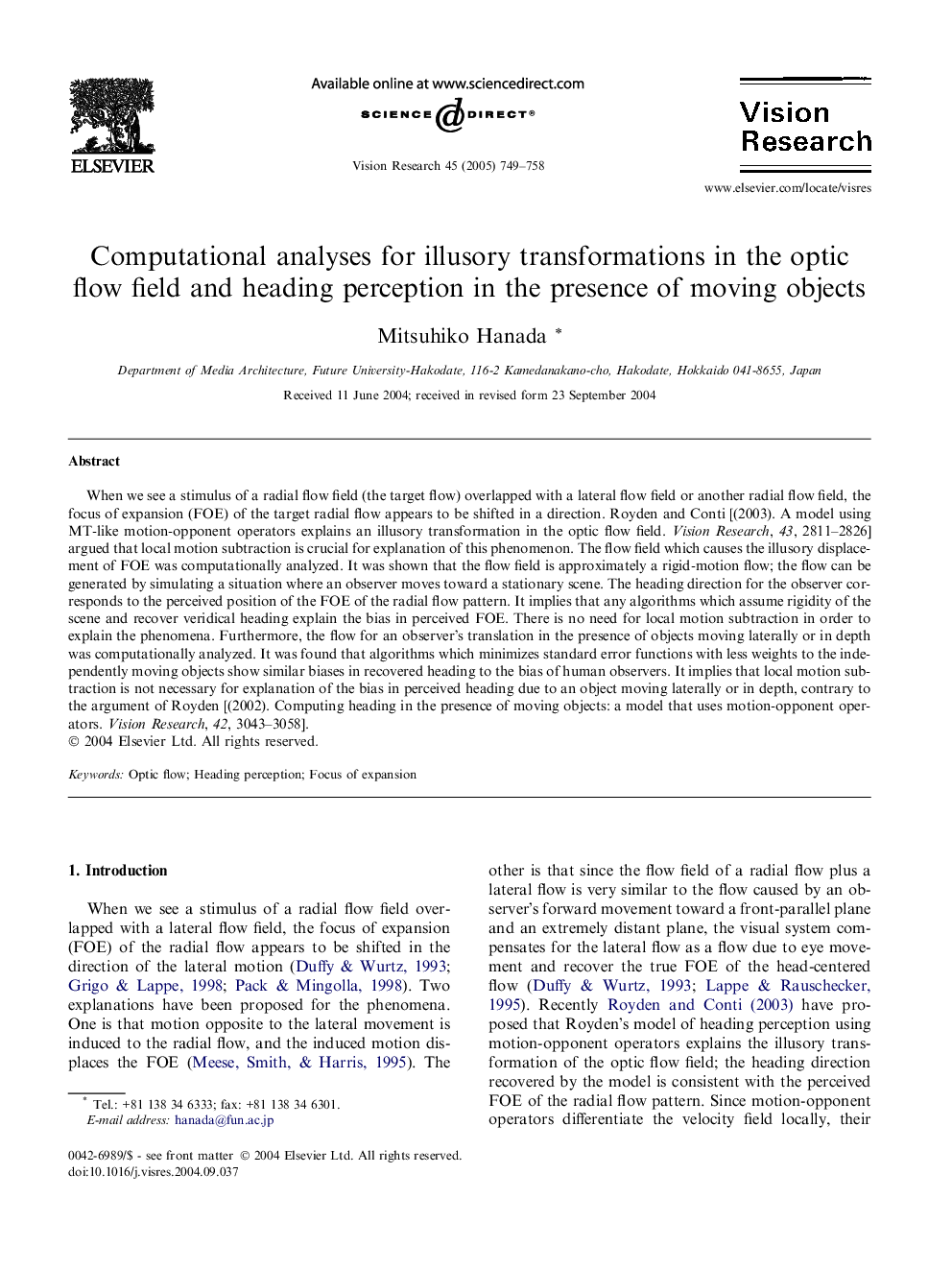| Article ID | Journal | Published Year | Pages | File Type |
|---|---|---|---|---|
| 9348577 | Vision Research | 2005 | 10 Pages |
Abstract
When we see a stimulus of a radial flow field (the target flow) overlapped with a lateral flow field or another radial flow field, the focus of expansion (FOE) of the target radial flow appears to be shifted in a direction. Royden and Conti [(2003). A model using MT-like motion-opponent operators explains an illusory transformation in the optic flow field. Vision Research, 43, 2811-2826] argued that local motion subtraction is crucial for explanation of this phenomenon. The flow field which causes the illusory displacement of FOE was computationally analyzed. It was shown that the flow field is approximately a rigid-motion flow; the flow can be generated by simulating a situation where an observer moves toward a stationary scene. The heading direction for the observer corresponds to the perceived position of the FOE of the radial flow pattern. It implies that any algorithms which assume rigidity of the scene and recover veridical heading explain the bias in perceived FOE. There is no need for local motion subtraction in order to explain the phenomena. Furthermore, the flow for an observer's translation in the presence of objects moving laterally or in depth was computationally analyzed. It was found that algorithms which minimizes standard error functions with less weights to the independently moving objects show similar biases in recovered heading to the bias of human observers. It implies that local motion subtraction is not necessary for explanation of the bias in perceived heading due to an object moving laterally or in depth, contrary to the argument of Royden [(2002). Computing heading in the presence of moving objects: a model that uses motion-opponent operators. Vision Research, 42, 3043-3058].
Related Topics
Life Sciences
Neuroscience
Sensory Systems
Authors
Mitsuhiko Hanada,
